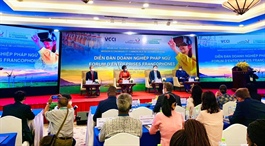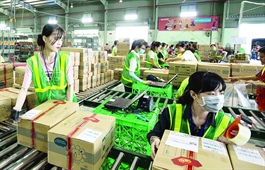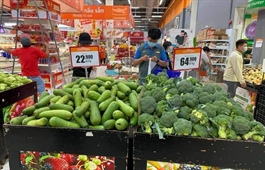ASEAN+3 economic outlook overshadowed by Russia-Ukraine conflict
ASEAN+3 economic outlook overshadowed by Russia-Ukraine conflict
The ASEAN+3 (Association of Southeast Asian Nations plus China, Japan and Korea)'s economic growth is expected to normalise this year as the COVID-19 pandemic recedes. However, rising geopolitical uncertainty over Russia-Ukraine is overshadowing the outlook.
In the latest report published on Tuesday, the ASEAN+3 Macroeconomic Research Office (AMRO) staff forecast growth in ASEAN+3 at 4.7 per cent this year, with growth for ASEAN at 5.1 per cent, meanwhile Viet Nam’s GDP growth is expected at 6.5 per cent this year.
However, the expectations were lower compared to the previous report, which was released in January, due to the Russia-Ukraine conflict. Previously, it foresaw the growth of Viet Nam’s GDP at 7.5 per cent and the bloc’s average at 4.9 per cent.
The growth outlook is underpinned by the region’s high vaccination rates, which should help mitigate the health risks of COVID-19.
“Now, as we move through 2022, it appears as though the region may finally have gained some ground in its long battle against the virus and we can now look forward to a fuller opening-up and a strong economic recovery,” said AMRO Chief Economist, Dr. Hoe Ee Khor.
Russia’s military operation in Ukraine is an emerging risk to the outlook. Its effects are already being felt in the region through higher energy prices.
On the international market, Brent crude prices fell below US$100 per barrel on Monday due to plans of big consumers to release oil from inventories and the zero-COVID policy of the Chinese Government.
However, it had soared by 38 per cent in the first quarter, marking its highest quarterly percentage gains since the second quarter of 2020, boosted mainly after Russia's February 24 attacks on Ukraine.
While ASEAN+3 economies have limited direct exposure to Russia and Ukraine, they will not remain unscathed if the conflict drags on. The economic fallout—disrupted global supply chains, higher global inflation, and lower global growth—would undoubtedly hurt ASEAN+3 exports and growth.
Soaring inflation in the United States has prompted the US Federal Reserve to begin hiking interest rates and reducing its balance sheet, but uncertainty remains as to how aggressive its approach will be.
A sharper-than-expected rate hike by the Fed, and consequent tightening in global financial conditions would have implications for interest rates, capital outflows, and financial market volatility in the region.
Within ASEAN+3, financial risks are still elevated in many economies due to the pandemic. Macro-financial policies continue to be focused on alleviating the pandemic’s impact on households and firms and supporting an economic recovery.
If the recovery is delayed, more businesses and individuals could come under financial stress.
Given the less supportive global policy settings in 2022, the region’s policymakers will have to undertake a crucial balancing act—avoiding a premature withdrawal of policy support to sustain the recovery, while at the same time facilitating the reallocation of capital and labour to new and expanding sectors and restoring policy space to prepare for future risks.
“ASEAN+3 policymakers will have to be nimble as they navigate this complex environment, strengthen economic recovery, and rebuild policy space,” Dr. Khor stressed.
“This will not be our last crisis. We must rebuild, and continuously innovate and learn as we prepare for the next crisis.”























